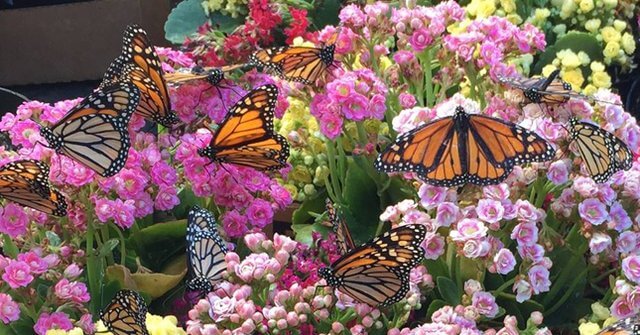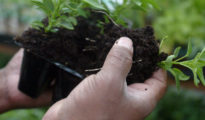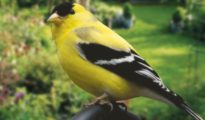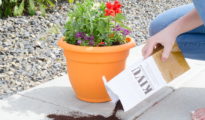Butterflies are among nature's most enchanting creatures. Their vibrant wings and graceful flight patterns are a pleasure to observe. A butterfly garden not only offers a serene retreat for these delicate insects but also provides a habitat that supports their lifecycle. In this guide, we’ll walk you through the process of planning and designing your very own butterfly haven.

1. Understand the Butterfly Lifecycle
To design an effective butterfly garden, you need to support all stages of a butterfly's life:
- Egg: Butterflies lay their eggs on host plants.
- Caterpillar (larvae): The hatched caterpillars consume the host plants.
- Chrysalis (pupa): Caterpillars transform into butterflies inside a chrysalis.
- Adult butterfly: The new butterfly emerges and feeds on nectar plants.
2. Select the Right Location
Butterflies are ectothermic, meaning they rely on external sources to regulate their body temperature. They prefer:
- Sunlit spaces: Choose a location that receives at least six hours of sunlight daily.
- Protection from wind: High winds can hamper the butterflies' ability to feed and lay eggs. Surround your garden with shrubs or walls to act as windbreaks.
3. Choose Host Plants
Host plants are vital for caterpillars. Without them, there would be no next generation of butterflies. Some popular host plants include:
- Milkweed: For the Monarch butterfly
- Parsley, dill, or fennel: For the Black Swallowtail
- Nettles: For the Red Admiral
Check local sources to identify which butterflies are native to your area and choose host plants accordingly.
4. Incorporate Nectar Plants
While host plants support caterpillars, adult butterflies feed on nectar. Here are some universal favorites:
- Coneflowers (Echinacea)
- Lantana
- Buddleia (Butterfly Bush)
- Zinnias
- Goldenrod
Try to select plants that bloom at different times to ensure a steady nectar supply throughout the seasons.
5. Provide Water and Shelter
Butterflies need water just like other creatures. A shallow dish filled with water or a wet sand patch can be beneficial. Additionally, provide flat stones where butterflies can bask in the sun.
For shelter, consider tall grasses and shrubs where butterflies can hide from predators and rough weather.
6. Avoid Pesticides
Chemicals and pesticides can be lethal to butterflies and their larvae. Embrace a more organic approach to gardening to ensure the safety of your winged guests.
7. Add Supplementary Features
Consider adding:
- Butterfly houses: Though not always used by butterflies, they can be a charming garden feature.
- Puddling stations: Butterflies often gather on wet sand or mud to extract minerals. A simple saucer filled with moist sand can attract these beautiful insects.
- Garden ornaments: Decorative items like wind chimes or gazing balls can enhance the overall aesthetics.
8. Maintenance
Regularly deadhead spent flowers to encourage new blooms. Keep an eye out for invasive species or aggressive plants that might overshadow your butterfly-friendly plants.
A butterfly garden is more than just a visual treat; it’s a commitment to supporting a significant part of our ecosystem. While the fluttering wings will certainly brighten your day, the knowledge that you're playing a role in the conservation of these magnificent creatures will enrich your soul. So, grab those gardening gloves and start your journey into the magical world of butterflies.
Beyond Basics: Delving Deeper into Butterfly Gardening
The Role of Color and Scent
While butterflies have good vision and are attracted to various colors, they seem especially drawn to red, yellow, pink, purple, and orange. Fragrance too can play a role, with certain scents enticing these insects to visit and linger.
Planting Design
- Layering: Just as in any garden, layering can help create an appealing aesthetic and functional garden. Use ground covers, mid-height plants, and taller shrubs or trees to give your garden depth.
- Clumping: Butterflies are more likely to be drawn to large masses of a single flower type than singular, scattered plantings. Aim to plant in clumps.
- Succession Planting: This ensures a continuous bloom throughout the seasons, providing nectar consistently.
The Night Watch – Moths
While butterflies bask in the daytime glory, moths take over the night shift. Some moths, like the Luna moth or Sphinx moth, are equally, if not more, enchanting. Planting evening-blooming flowers like evening primrose or moonflower can draw in these nocturnal beauties.
Natural Predators
Maintain a balance in your garden by also accommodating natural butterfly predators like birds. They play an essential role in the ecosystem. Bird baths, feeders, and houses can make your garden a holistic habitat.
Beneficial Companions
It's not just about flowers. Incorporate herbs like mint, oregano, and dill. Not only are they host plants for some caterpillars, but they also repel certain pests, reducing the need for chemicals.
The Role of Native Plants
Local or native plants are adapted to your region’s climate, soil, and local pests. They often require less maintenance and provide familiar shelter and food sources for local butterfly species. By prioritizing native plants, you can enhance your garden's sustainability and eco-friendliness.
Water Features
Beyond simple dishes, consider adding a bubbling fountain or a pond. The movement of water can be an added attraction, not just for butterflies but also for birds, dragonflies, and beneficial insects.
Sensory Engagement
The butterfly garden should be a delight not just for the butterflies but for the humans too. Consider a bench, a pathway of fragrant herbs, or even a hammock. The gentle fluttering around and the serene environment can offer a tranquil retreat from the daily hustle.
In Conclusion
Building a butterfly garden is akin to painting a living canvas. With each plant, feature, and design choice, you're crafting a living ecosystem that benefits both nature and you. It's an ongoing journey of learning, observation, and immersion into the beauty of nature. Whether you have a balcony or a sprawling backyard, with the right touches, you can make your space a haven for these fluttering marvels.



















